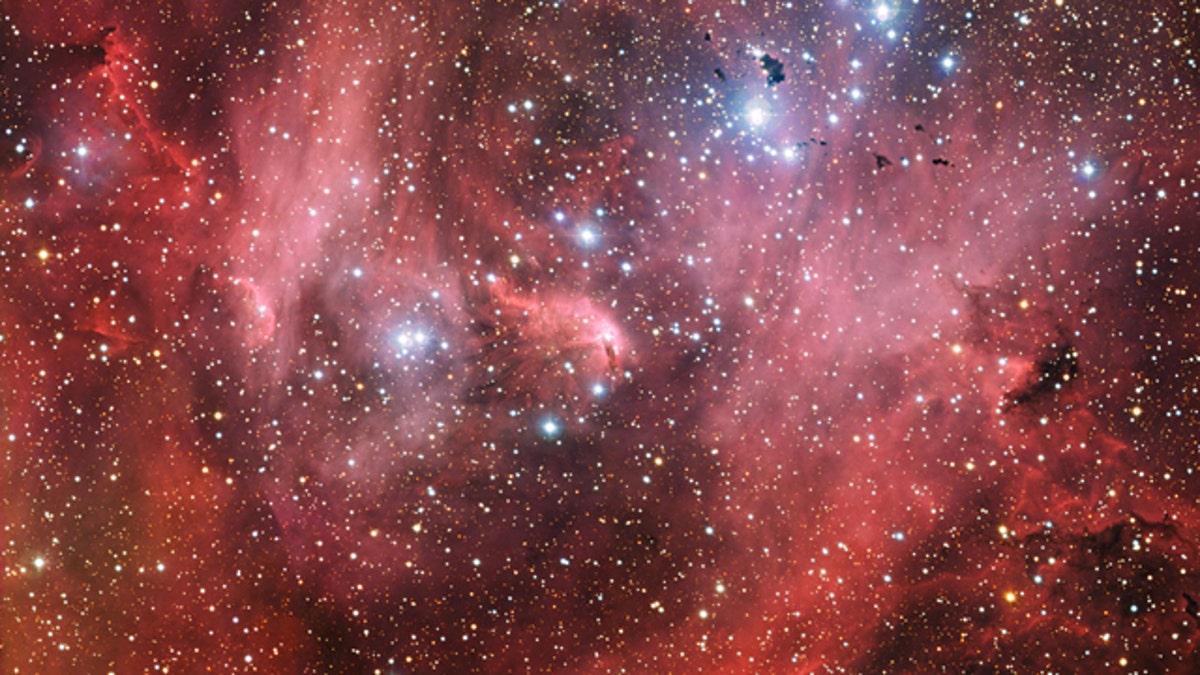
A new image from the European Southern Observatory shows the Running Chicken Nebula, a cloud of gas and newborn stars that lies 6,500 light years from us in the constellation of Centaurus. (ESO)
The European Southern Observatory (ESO) has released a stunning new image of the colorfully named "Running Chicken Nebula," a.k.a. IC 2944, or the Lambda Centauri Nebula. Like most nebulae, it's a big clump of glowing gas and dust, and somewhere deep within its gassy depths, new stars are being born.
As the dust and gas swirls around the nebula, massive knots start to form, until the gas and dust start to collapse under the gravitational attraction. This causes the material at the center to heat up into a "protostar," which starts gathering up even more dust and gas.
BIG PIC: Dying Star Betelgeuse Spews Fiery Nebula
Not all that material will make up the star. Some of it might one day become a planet, or an asteroid, or comet -- or just a dusty cloud hanging around its parent star.
Note, also, the black clumps set against the bright red background. They are dark because the dust and gas are sufficiently dense to absorb surrounding light, but infrared imaging sees through the clutter and reveals new stars being born within them. These are called "Thackeray's globules," after the South African astronomer who discovered them.
Andrew David Thackery specialized in stellar spectroscopy and headed the Radcliffe Observatory in Pretoria, South Africa from 1951 until he retired in 1974. (Image: Thackeray with Cyril Jackson to his left and Karl Henize to his right, circa 1950.)
BIG PIC: Herschel Sees Big Stellar Babies in Rosette Nebula
The son of a classical scholar, Thackeray was born in London and fell in love with astronomy as a child, thanks to the encouragement of his uncle, solar astronomer John Evershed, and his aunt, Mindie Orr, who wrote a popular book on the stars of the southern hemisphere. As a graduate student, he worked at the Mount Wilson Observatory in California, before joining the Radcliffe Observatory team in 1948.
The observatory budget was tight, with limited equipment to supplement the 74-inch reflecting telescope -- Thackeray didn't even have a spectrograph until 1951. So he focused his observations on objects like globular clusters in the Large and Small Magellanic Clouds, which were particularly suited to the Radcliffe telescope's capabilities.
BIG PIC: Dissecting the Crab Nebula
A decade earlier, fellow astronomer Bart Bok had discovered dark, dense clouds of dust and gas that he likened to "insects' cocoons," and suspected they were collapsing under the weight of gravity to form new stars and star clusters, although this was not verified until 1990. They're some of the coldest objects in the universe.
While scanning the night sky, Thackeray discovered a particularly pronounced collection of globules in what we now call the Running Chicken Nebula -- hence, "Thackeray's globules."
Radcliffe Observatory closed down in 1974, and Thackeray died tragically in an accident in 1978, days before he would have received word of his election to the Royal Astronomical Society. But his globules continue to fascinate astronomers to this day, since their structure and density are still something of a mystery.
